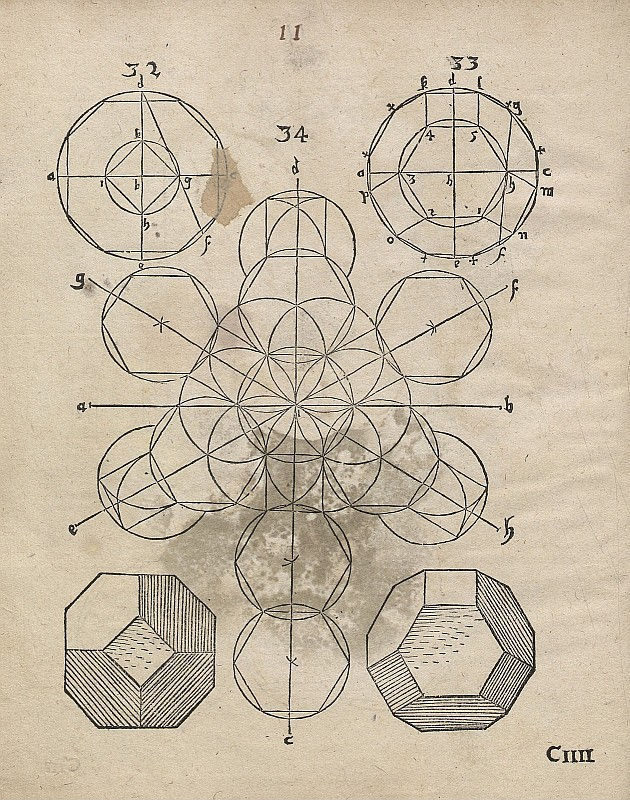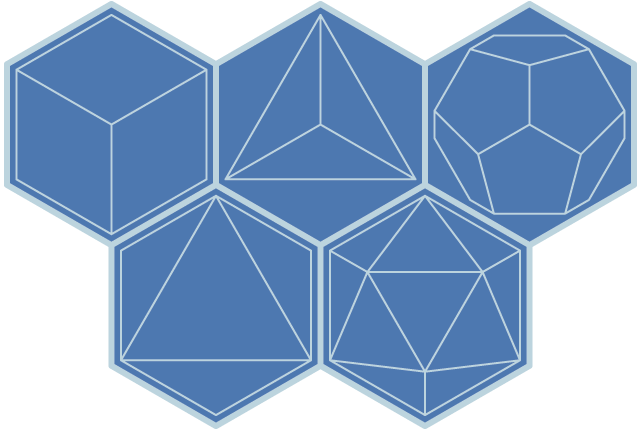The truncated octahedron
The truncated octahedron is the fourth order permutohedron, and forms constituent cells in higher-order permutohedra. Its vertices represent every combination of the coordinates 1, 2, 3, and 4 in 4-space, in same way that a hexagon can be embedded in 3-space with vertices at every permution of 1, 2, and 3 (i.e., bisecting a cube spanning coordinates 1, 1, 1 to 3, 3, 3). It is also, along with the lowly cube, one of only two space-filling uniform polyhedra, and is one of only five regular-faced convex polyhedra able to do so—along with the aforeementioned cube, the triangular and hexagonal prisms, and the gyrobifastigium, whatever the crap that is.


